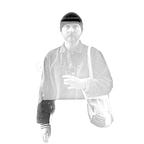Quickly On Blake Edwards’ 1962 film Experiment In Terror.
Blake Edwards’ 1962 crime thriller has tinges of noir and is a highly affecting piece of work. The film is reissued on Blu-ray in the UK next week, and I had the pleasure of watching the disc last night.
Having never seen it prior to this screening, I had, for some reason, had the film pegged as little more than a hokey B-movie. Edwards is a figure barely on my radar, a studio man best known for the Inspector Clouseau pictures and the problematic The Party. That Andrew Sarris responded to seeing Breakfast At Tiffany’s by declaring“the directorial surprise of 1961” tells you much of what you need to know about the work leading up to it. Breakfast At Tiffany’s brought with it a creative boost for the journeyman director, with Experiment In Terror and the Academy Award-winning Days Of Wine And Roses following quickly behind it in 1962.
Experiment In Terror opens with one of the eeriest encounters of the age. The opening section of the film charts the search for this unseen menace by Glenn Ford’s FBI man, while equally too paying attention to the emotional plight of the effects of the stranger’s threats on the innocent banker caught at the centre of the picture (played by Lee Remick). Midway through the picture the monster is made human, in a manner not dissimilar to Richard Fleischer’s The Boston Strangler, as the reasoning (well, partial reasoning) behind his project are made clear. An astonishing performance from Ross Martin as the antagonist is the highlight of the piece.
Experiment In Terror is an apt title for a film of this ilk. It plays like a fairground ride, with the viewer dragged through the most unusual of situations imaginable. It works as both a provocative horror tale and legitimate procedural, and is a hugely entertaining piece of work.
Experiment In Terror is available from the Indicator Series.
